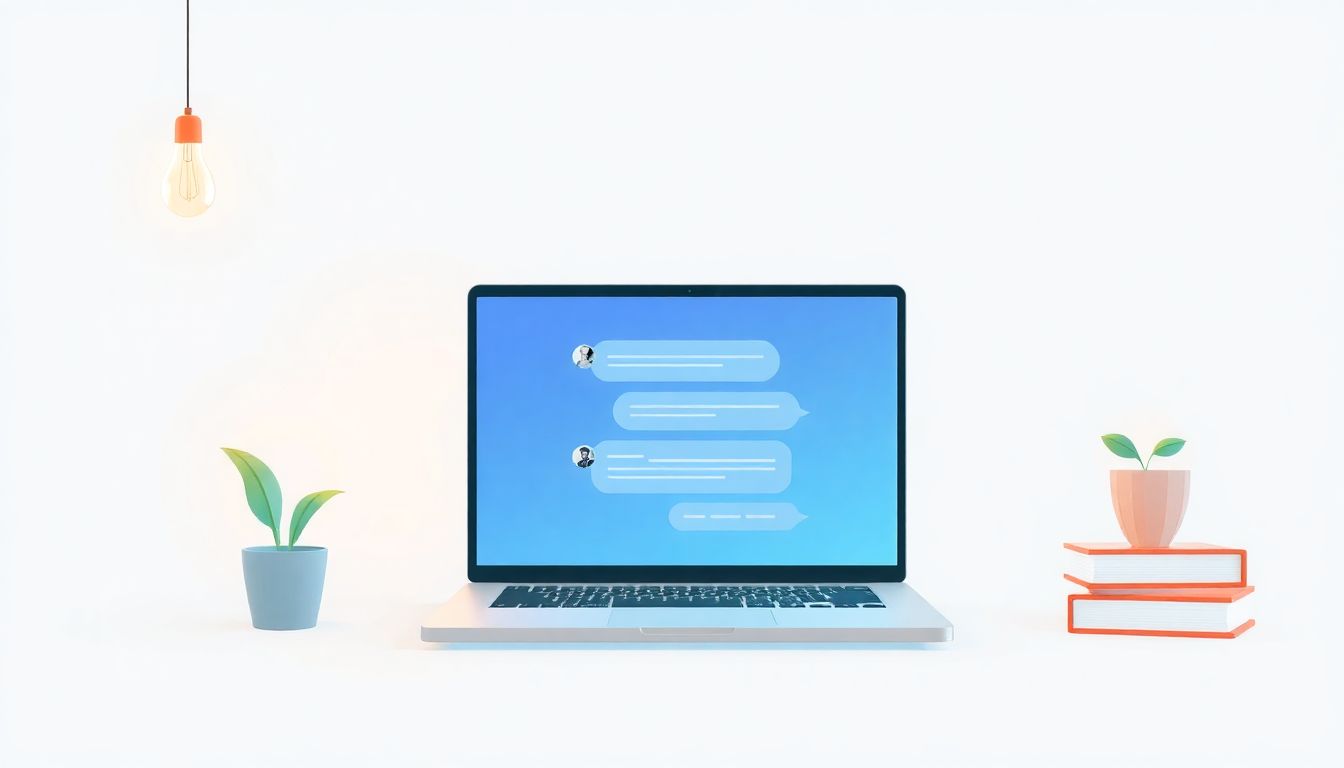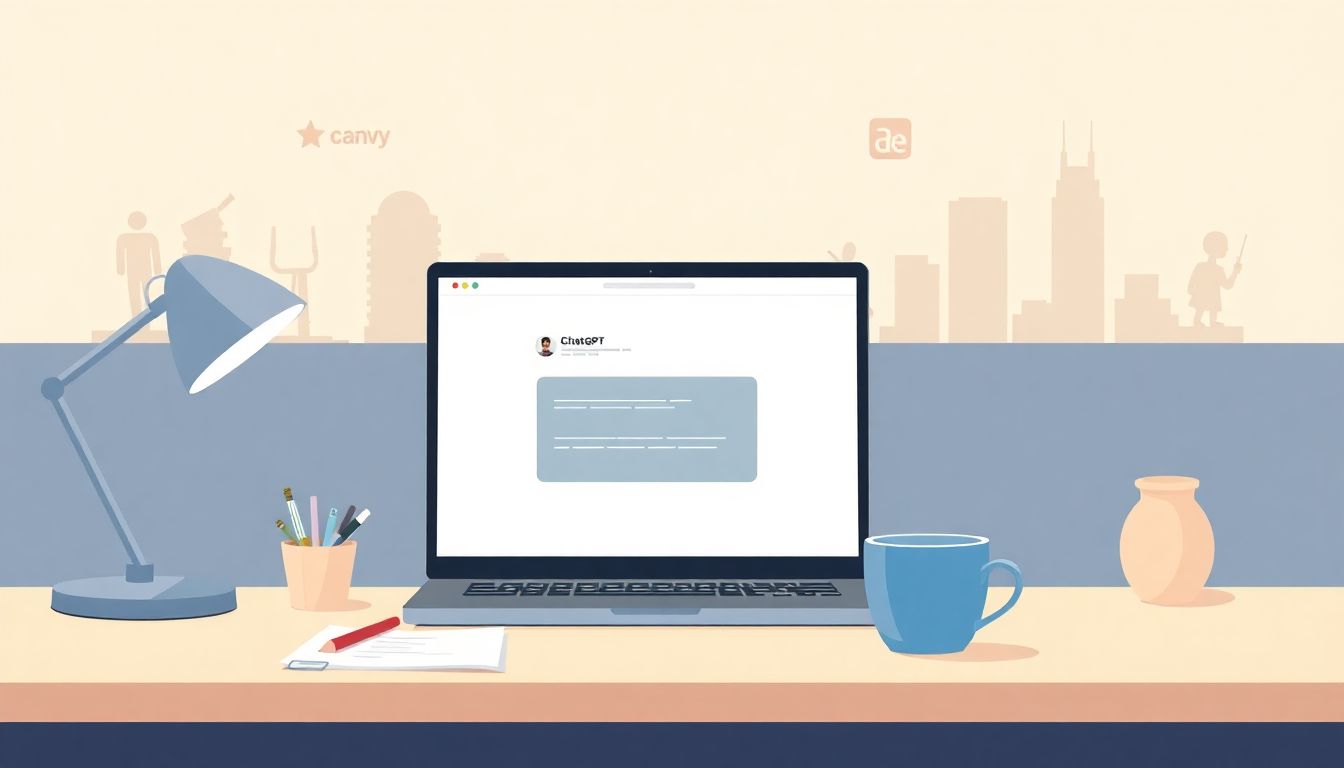Generating blog content ideas can be a daunting task, can’t it? Many of us have faced the dreaded writer’s block, staring at a blank screen, desperately seeking inspiration. You might be wondering how to consistently come up with fresh and engaging topics that resonate with your audience.
But what if I told you there’s a tool that can make this process a breeze? By using ChatGPT, you can effortlessly brainstorm a treasure trove of ideas that will captivate your readers. Stick around, and I’ll walk you through just how simple it is to let AI spark your creativity.
In this post, we’ll explore the step-by-step guide to creating content prompts, different types of blog ideas you can generate, and tips to refine them. Plus, you’ll see real-life examples and learn how to avoid common pitfalls. Let’s dive in!
Key Takeaways
- Define your blog’s niche and audience for more tailored content ideas using ChatGPT.
- Use clear and concise prompts, such as “List 10 blog post ideas about healthy living.”
- Explore various content types like how-to guides, listicles, and interviews to keep ideas fresh.
- Iterate your prompts to refine responses and ensure relevance to your audience.
- Avoid vague prompts; specificity leads to better suggestions.
- Research trending topics to enhance the relevance of your generated ideas.
- Utilize additional tools like Canva and BuzzSumo to support your content strategy.

How to Use ChatGPT to Generate Blog Content Ideas
Using ChatGPT to generate blog content ideas is straightforward and effective.
Start by clearly defining your blog’s niche or audience.
Then, simply prompt ChatGPT with your topic of interest.
For example, type: Generate a list of blog ideas for a personal finance blog.
This approach allows ChatGPT to provide specific and relevant suggestions tailored to your audience’s interests.
Additionally, consider asking for different formats by prompting with: Suggest 5 ways to present these topics, such as how-tos, listicles, or interviews.
The more specific you are, the more tailored the responses will be.
Step-by-Step Guide to Creating Content Prompts with ChatGPT
Creating effective content prompts for ChatGPT involves a few simple steps.
- Define Your Goal: What do you want to achieve? For instance, are you seeking blog post ideas, a content calendar, or a specific angle on a topic?
- Craft Clear Prompts: Use concise language. For example, try:
List 10 blog post ideas about sustainable living. - Specify Audience: Include your target demographic. Try something like:
Give me blogging ideas for millennials interested in travel. - Iterate and Refine: If the response isn’t what you expected, rephrase your prompt for clarity. For example:
Expand on the travel ideas by including unique experiences.
This method helps ensure that ChatGPT understands your needs and provides relevant suggestions.
Types of Blog Content Ideas You Can Generate with ChatGPT
ChatGPT can help generate a variety of blog content ideas based on your niche.
Here are some content types you might explore:
- How-To Guides: Examples include
Write a how-to guide for beginners on starting a digital marketing career. - Listicles: Try prompting with
Generate a list of 10 essential tools for graphic designers. - Interviews: Ask for suggestions like
List potential interview questions for a local artist. - Case Studies: Prompt with
Provide ideas for case studies on successful small businesses. - Opinion Pieces: You can say
Generate topics for opinion pieces about climate change advocacy.
This variety allows you to keep your content fresh and engaging, targeting different reader preferences.
Tips for Refining Your Blog Content Ideas from ChatGPT
Refining blog content ideas generated by ChatGPT ensures you get the best possible material.
Start by critically assessing the ideas provided. Do they align with your audience’s needs?
You can enhance the output by mixing and matching ideas. For example, combine a how-to guide with case studies.
Consider revisiting prompts for clarity like: Can you rephrase this idea to be more engaging for a young adult audience?
Additionally, research trending topics and keywords to ensure your content stays relevant.
This iterative process helps you create high-quality, targeted blog posts that resonate with your audience.

Real-Life Examples of Blog Content Ideas from ChatGPT
Seeing real-life examples can help you understand how to effectively use ChatGPT for generating blog ideas.
For a health blog, input the prompt: Generate 10 blog post ideas about mental wellness for young adults.
This might yield topics like “5 Mindfulness Techniques for Stress Relief” or “The Importance of Digital Detox for Mental Health.”
For a tech blog, try: List 10 innovative blog post ideas about artificial intelligence trends in 2023.
You could end up with ideas such as “The Rise of AI in Everyday Life” or “How AI is Transforming Healthcare.”
In the gardening niche, use: Provide 5 unique blog post ideas for urban gardening enthusiasts.
This could give you topics like “Best Vegetables to Grow in Small Spaces” or “DIY Vertical Gardens for Apartment Dwellers.”
By using such specific commands, you can obtain tailored content suggestions that resonate with your audience.
How to Use ChatGPT for Different Blog Niches
Using ChatGPT effectively for various blog niches involves crafting prompts that reflect your audience’s interests.
For a travel blog, prompt it with: Generate 10 blog ideas for budget travel in Europe.
This might yield posts like “Top 10 Affordable Destinations in Europe” or “How to Travel Europe on $50 a Day.”
If your niche is personal finance, use: List 7 practical blog post ideas about financial literacy for teens.
Expect topics like “Understanding Credit Scores” or “Saving for College: A Guide for Teens.”
In the food blogging space, you might input: Suggest 5 unique post ideas for healthy vegan recipes.
This could lead to titles such as “Easy One-Pot Vegan Meals” or “Quick Vegan Snacks for Busy Lifestyles.”
Tailoring your prompts to your niche maximizes the relevancy of the content ideas ChatGPT provides.
Common Mistakes to Avoid When Generating Blog Ideas with ChatGPT
Avoiding common mistakes can make your interaction with ChatGPT much smoother and productive.
One common pitfall is being vague. Instead, use specific prompts like: Generate 10 blog post ideas for outdoor photography tips.
Another mistake is overloading your prompts with information. Keep it clear and concise.
For example, prompt: List 5 blog ideas about home workouts for busy professionals. is more effective than lengthy explanations.
Also, don’t forget to refine your ideas. If the response isn’t quite right, adjust your prompt, such as: Rewrite the home workout ideas to include beginner-friendly tips.
Lastly, ensure you ask for various types of content. Instead of only requesting posts, ask for infographics or videos too: Suggest different content formats for a blog about self-improvement.
Avoiding these mistakes can help you unlock more valuable and relevant ideas from ChatGPT.
Additional Resources for Blog Content Creation with ChatGPT
To enhance your content creation with ChatGPT, consider exploring various additional resources.
Platforms like Canva can allow you to create stunning visuals for your blog posts.
Use keyword research tools, such as AnswerThePublic, to identify popular questions in your niche.
Additionally, websites like BuzzSumo can help you find trending topics based on social shares.
Another useful resource is HubSpot’s Blog Topic Generator, which can provide ideas when you’re stuck.
You can also join forums or groups relevant to your niche, like Subreddits, to gain insights into what people want to read.
Combining these resources with ChatGPT can help keep your content fresh and engaging.

Common Mistakes to Avoid When Generating Blog Ideas with ChatGPT
Avoiding pitfalls in your interaction with ChatGPT is crucial for effective content generation.
One common mistake is providing vague prompts. Instead, be specific with your requests.
For example, rather than saying: Give me ideas for healthy recipes., try List 10 healthy, quick recipes for busy professionals.
Another error is not refining the suggestions you receive. Don’t hesitate to follow up with ChatGPT using prompts like: Can you provide more detail on any of these recipes?
Additionally, be careful with overloading prompts with too much information. Simplicity often yields better responses.
Use straightforward requests, such as: Suggest 5 blog post ideas about budget travel in Asia.
Lastly, don’t forget to ask for various content types. Prompting with: What are 5 creative formats I can use for travel blogging? can open up new possibilities.
Staying clear of these common mistakes will enhance the quality of blog ideas generated by ChatGPT.
Additional Resources for Blog Content Creation with ChatGPT
Enhancing your blog content creation process with additional tools can be immensely beneficial.
Utilize Canva for designing eye-catching graphics and visuals to accompany your posts.
Explore AnswerThePublic for understanding common search queries related to your niche.
Sites like BuzzSumo can help you identify trending topics that resonate with your audience.
Another great tool is HubSpot’s Blog Topic Generator, which can kickstart your brainstorming sessions.
Don’t overlook the value of online communities. Joining forums or relevant Facebook groups can provide fresh insights.
By combining these resources with ChatGPT, you can create more dynamic, engaging blog content that speaks to your readers.
FAQs
You can use ChatGPT to brainstorm blog post ideas by providing it with specific topics, keywords, or themes. This allows the AI to generate creative and relevant suggestions tailored to your target audience.
ChatGPT can help generate a variety of blog content including how-to guides, listicles, product reviews, expert interviews, and opinion pieces. It can cater to numerous niches based on the prompts you provide.
Common mistakes include not providing enough context or specific prompts, relying solely on AI for content creation, and neglecting to refine or personalize the generated ideas to align with your blog’s voice or audience.
Refine content ideas by assessing relevance to your audience, combining multiple suggestions for depth, and modifying language to fit your style. Additionally, use audience feedback to improve the quality of your blog ideas.
